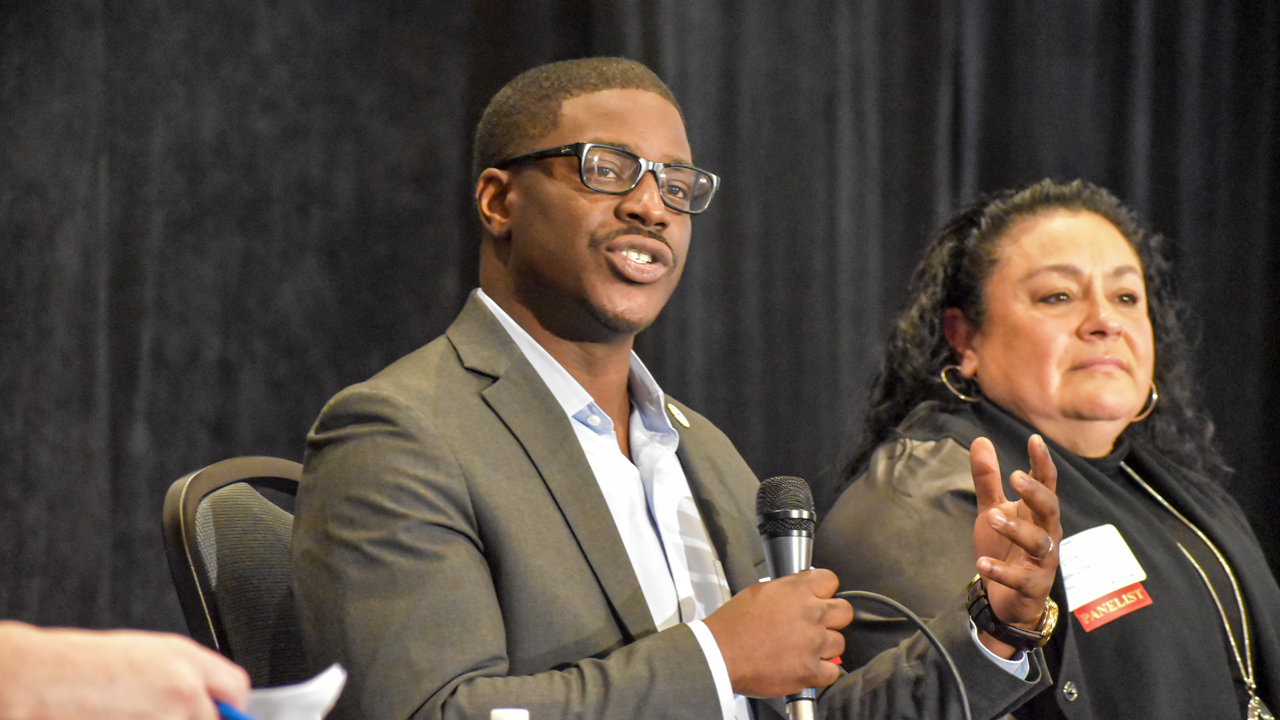None of us can predict the future.
But the two things we know for sure are that it is coming, and it will be different.
On Thursday morning business leaders and stakeholders from across the Milwaukee area gathered for BizTimes Media’s Milwaukee County 2050 event to learn how to prepare the county for the changes ahead.
Keynote speaker, business futurist Geoffrey Kasselman, CEO of Op2mize Energy, kicked things off with a discussion of the exponential changes people and communities at large can expect in both technology and their everyday lives over the next 27 years, and how to capitalize on them, instead of be trampled by them.
“We stand on the brink of technological revolution that will fundamentally alter the way we live, work and relate to each other,” Kasselman said, quoting a statement from the World Economic Forum. “In its scale, scope, and complexity, the transformation will be unlike any humankind has experienced before.”
But as Kasselman discussed the impacts of artificial intelligence like ChatGPT, quantum computing, data as a commodity, climate change, shifting energy sources, the importance of fresh water, and generations Alpha and Theta, Milwaukee County business and community leaders talked about what needs to happen for the region to not just grow, but thrive in the coming decades.
Representing a cross section of the community, panelists – Milwaukee County Executive David Crowley; Nancy Hernandez, president of the Hispanic Collaborative; Abby Kursel, a partner at gener8tor and James Phelps, president of JCP Construction – discussed ways to help area residents meet the coming innovations and challenges.
Keep more dollars here
For Kursel, who helps connect investors and startups across the country, a key goal will be ensuring that more of the region’s investment dollars end up boosting communities and businesses right here in Milwaukee County.
“There is a problem that we see that we like to call ‘the two-pocket problem.’ A lot of institutions that are investing – think endowments, foundations, universities, etc. – only 5% of their assets that they hold are required to be distributed for philanthropic purposes on an annual basis,” Kursel said. “The 95% that is left over is there to grow. So, what ultimately ends up happening, is those institutions typically outsource (the investment) of that other 95% to money managers who are typically on the coast and typically have no tie back to the community where that money is from. So, they are exporting this capital to create wealth and jobs in those other communities … We need to create more of a one-pocket system of how this money is thought about and distributed and bring it closer to home.”
Improving public education
In addition to making sure more of our money stays here, other panelists stressed the importance of addressing racism and educational shortcomings that continue to hold entire swaths of the community back.
“We need to do something,” Hernandez said of the region’s education system.
Although some public and charter schools in Milwaukee County do very well, the most recent Wisconsin Department of Public Instruction evaluation for the Milwaukee Public School District as a whole finds that it “meets few expectations” when it comes to meeting attendance and student achievement goals.
“If you look at what is happening with our kids, we are doing them a big disservice right now. We are not putting them in positions (where they have opportunity and choices),” she said, urging everyone in the room to get involved. “We don’t have our kids set up in a way that they even have the ability to be digitally literate when they graduate. We have some pockets that are fine, but many that are not.”
Addressing disparities, needs
Hernandez also cited U.S Bureau of Labor Statistics showing that by the year 2030, half of all net new workers in the United States will be Hispanic.
Crowley bemoaned how education has become unnecessarily politicized, while Phelps said bold steps are needed instead of the incremental changes that seem to be the status quo.
When it comes to creating the kind of affordable housing that will help build better communities, Phelps said people need to talk openly about the racism and classism that keep affordable, or workforce housing projects from being built in places like the suburbs.
“We need to get rid of this (NIMBY) mentality that we have,” Phelps said. “It’s about being open and honest about it, instead of ‘Milwaukee nice.’”
Collaboration key
In closing, Crowley and other panelists stressed the importance of collaboration across business, public, and nonprofit communities. That includes collaboration across the county, the region, and the state at large.
“If you drop a dime in Milwaukee County, it creates a ripple across the state,” Crowley said. “The better we do, the better the entire state does.”









